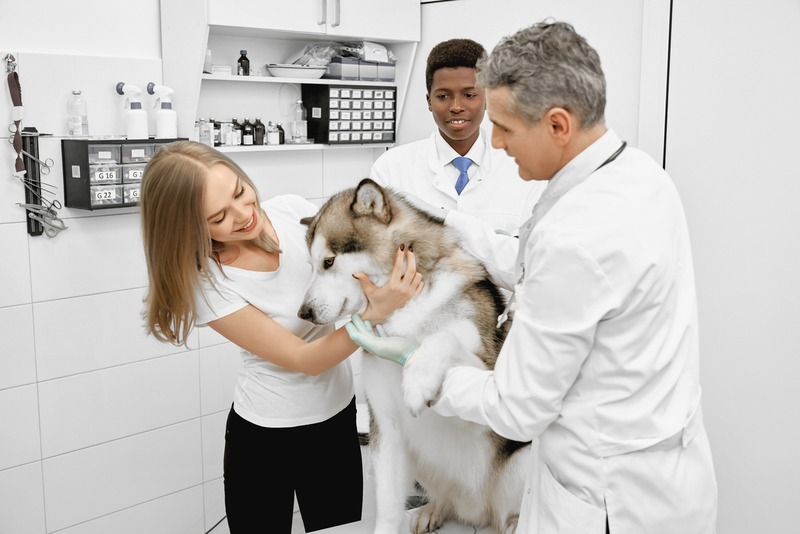When our furry friends undergo surgery, it’s a stressful time not only for them but also for us as pet owners. Post-surgical care is crucial to ensure a swift and uneventful recovery. However, sometimes, complications can arise, known as post-surgical syndromes. Throughout this article, we’ll take a casual stroll through some of the common syndromes that pets might experience after surgery and how they can be managed or, better still, prevented.
Common Syndromes After Pet Surgery
After pet surgery, we need to monitor a handful of syndromes. These include infection, postoperative pain, and behavioral changes, to name a few. Let’s discuss them in detail.
1. Infection
One of the most common issues after surgery is the dreaded infection. It can be as mild as slight redness and swelling at the surgical site or as severe as systemic illness. Signs that our pet might be brewing an infection include:
-
Increased redness or swelling around the wound
-
Discharge, especially if it’s smelly or pus-like
-
Fever and lethargy
-
Lack of interest in food or water
Spotting these early and getting back to the vet can make a huge difference. Trust me, the last thing we want is for our pets to go through more than they have to.
2. Postoperative Pain
No one likes to be in pain, and that includes our four-legged companions. Recognizing pain in pets can be tricky since they tend to be stoic. But here are a few tell-tale signs:
-
Whimpering or moaning
-
Guarding the part of the body that hurts
-
Change in their usual behavior, like not wanting to be touched
-
A decrease in appetite or activity level
Pain management is a critical part of post-surgical care, so don’t hesitate to discuss it with your vet if you think your pet is uncomfortable.
3. Behavioral Changes
Ever seen your typically laid-back cat turn into an escape artist following a trip to the vet? Or is your always-energetic dog suddenly acting all mopey? Surgeries can sometimes lead to behavioral changes in pets. Whether it’s because of discomfort or just being out of their usual routine, we need to monitor and manage it.
4. Anesthetic Reactions
Although rare, reactions to anesthesia can occur. If your pet seems excessively drowsy or has difficulty breathing post-surgery, it’s essential to contact the vet immediately. Anesthetic reactions can be severe, so they should not be taken lightly.
5. Seroma Formation
Sometimes, a pocket of fluid called a seroma can develop at the surgery site. It’s generally non-painful, but its size can be concerning. Typically, seromas resolve independently, but it’s worth a checkup if they’re significant or not improving.
6. Post-Surgical Syndromes
Now, if you’re wondering what can be done if your pet exhibits any of these syndromes, here’s some advice. The cornerstone of managing post-surgical complications is being proactive and attentive. Some steps include:
-
Keeping the surgical site clean and dry
-
Following your vet’s instructions for medication and wound care
-
Ensuring your pet gets rest and is confined to a safe, comfortable area
-
Monitoring your pet’s eating, drinking, and bathroom habits
Let’s not forget the power of early intervention. If something seems off, it’s better to contact your vet sooner rather than later.
Treatments and Therapies for Recovery
Facilities that provide Veterinary surgery in Columbia, TN, offer a broad range of treatments tailored to pet recovery. Depending on your pet’s specific needs, treatments can range from the traditional to the technologically advanced.
Pain Management
Pain management is paramount in the recovery process. Most vets will prescribe pain medication to help keep your pet comfortable. Be bold about asking questions about the type and duration of pain medications; understanding how they work is vital to keeping your pet relaxed at home.
Follow-up Specialist
Consultation with experts in veterinary internal medicine can be crucial, especially if complications develop post-surgery. These specialists dig deeper into potential underlying conditions that may affect recovery and can tailor treatment plans to each pet’s needs, providing care beyond the surgery itself.
Physical Therapy and Rehabilitation
For pets needing to regain strength or re-learn basic movements, rehabilitation is key. Physical therapy may include controlled exercises, massage, or even hydrotherapy. Yes, it’s as cool as it sounds—pets in pools getting their groove back.
Advanced Treatments
Some pets may benefit from cutting-edge treatments. One such treatment gaining popularity for its effectiveness is cold laser therapy for dogs and cats in Columbia. This non-invasive technique helps speed healing, reduce pain, and decrease inflammation. It’s especially beneficial for pets with chronic conditions or those recovering from trauma and orthopedic surgeries.
Overall, many tools are at a vet’s disposal to help our pets recover post-surgery. It’s heartening to know that our pets are not left to tough it out on their own—there’s an army of treatments and a battalion of caring professionals behind them.
Keeping Complications at Bay
We know it’s not fun, but being aware of possible post-surgical issues is a big part of being a responsible pet parent. Here are some things we can do to reduce the likelihood of complications:
-
Pre-surgery, make sure your pet is as healthy as possible to reduce risks
-
Follow the recommended fasting protocol before the surgery to reduce the risk of anesthesia-induced vomiting
-
Keep a close eye on them during the initial post-surgery period when complications are more likely to show up
-
Prevent them from messing with their sutures—collars and suits are not just a fashion statement but a necessity for your pet’s speedy recovery.
Final Thoughts
As we end our topic, remember that knowing about post-surgery issues for pets is crucial. Recognizing these problems and understanding treatments can significantly aid their recovery. It’s essential to support them, sometimes with help from veterinary surgeons or specialists. Using treatments like cold laser therapy can be beneficial. By loving and vigilance, we can help our pets recover smoothly and reduce complications. Our love and commitment add a vital safety layer during their recovery time.




